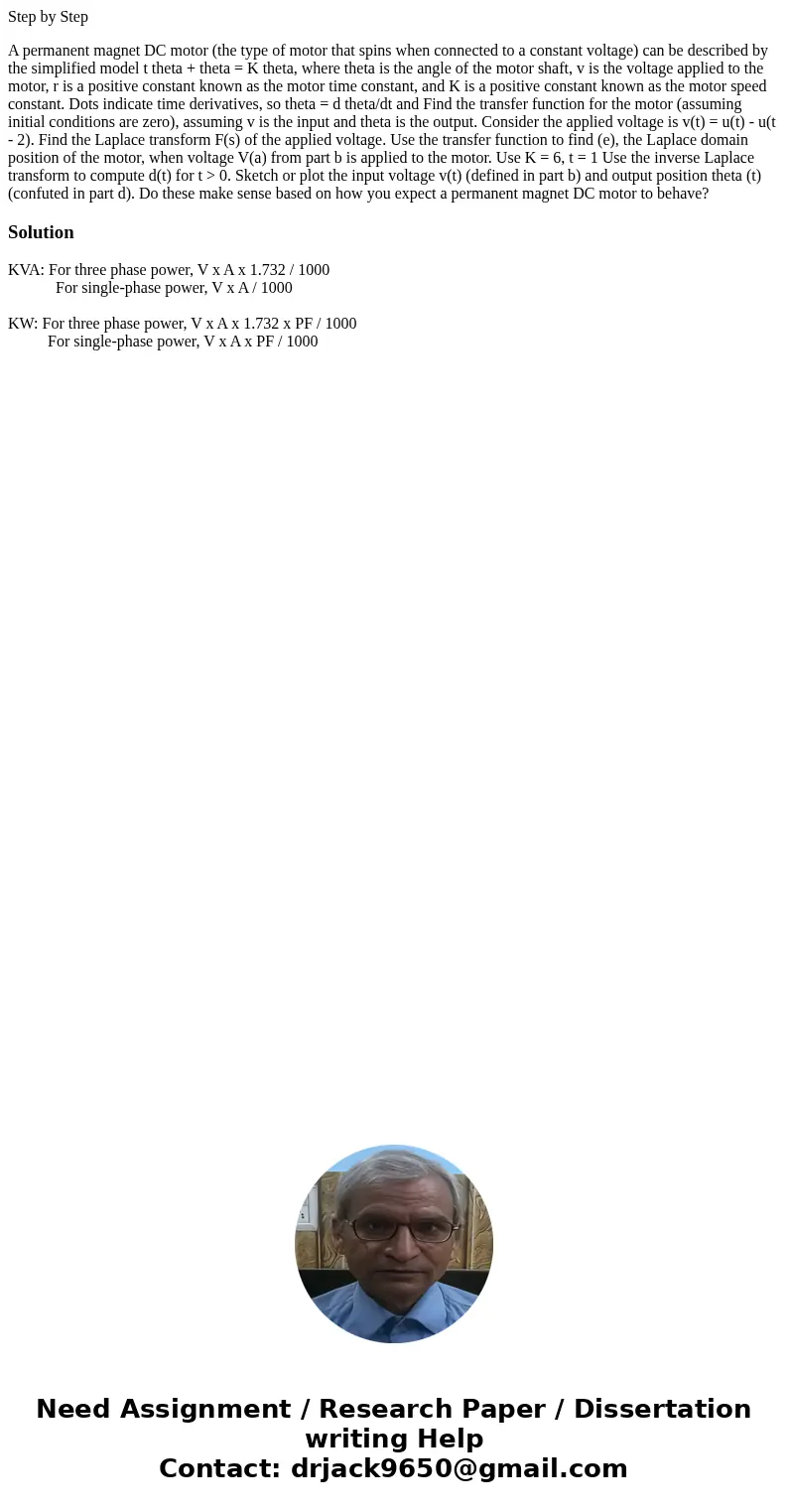Step by Step A permanent magnet DC motor the type of motor t
Step by Step
A permanent magnet DC motor (the type of motor that spins when connected to a constant voltage) can be described by the simplified model t theta + theta = K theta, where theta is the angle of the motor shaft, v is the voltage applied to the motor, r is a positive constant known as the motor time constant, and K is a positive constant known as the motor speed constant. Dots indicate time derivatives, so theta = d theta/dt and Find the transfer function for the motor (assuming initial conditions are zero), assuming v is the input and theta is the output. Consider the applied voltage is v(t) = u(t) - u(t - 2). Find the Laplace transform F(s) of the applied voltage. Use the transfer function to find (e), the Laplace domain position of the motor, when voltage V(a) from part b is applied to the motor. Use K = 6, t = 1 Use the inverse Laplace transform to compute d(t) for t > 0. Sketch or plot the input voltage v(t) (defined in part b) and output position theta (t) (confuted in part d). Do these make sense based on how you expect a permanent magnet DC motor to behave?Solution
KVA: For three phase power, V x A x 1.732 / 1000
For single-phase power, V x A / 1000
KW: For three phase power, V x A x 1.732 x PF / 1000
For single-phase power, V x A x PF / 1000

 Homework Sourse
Homework Sourse